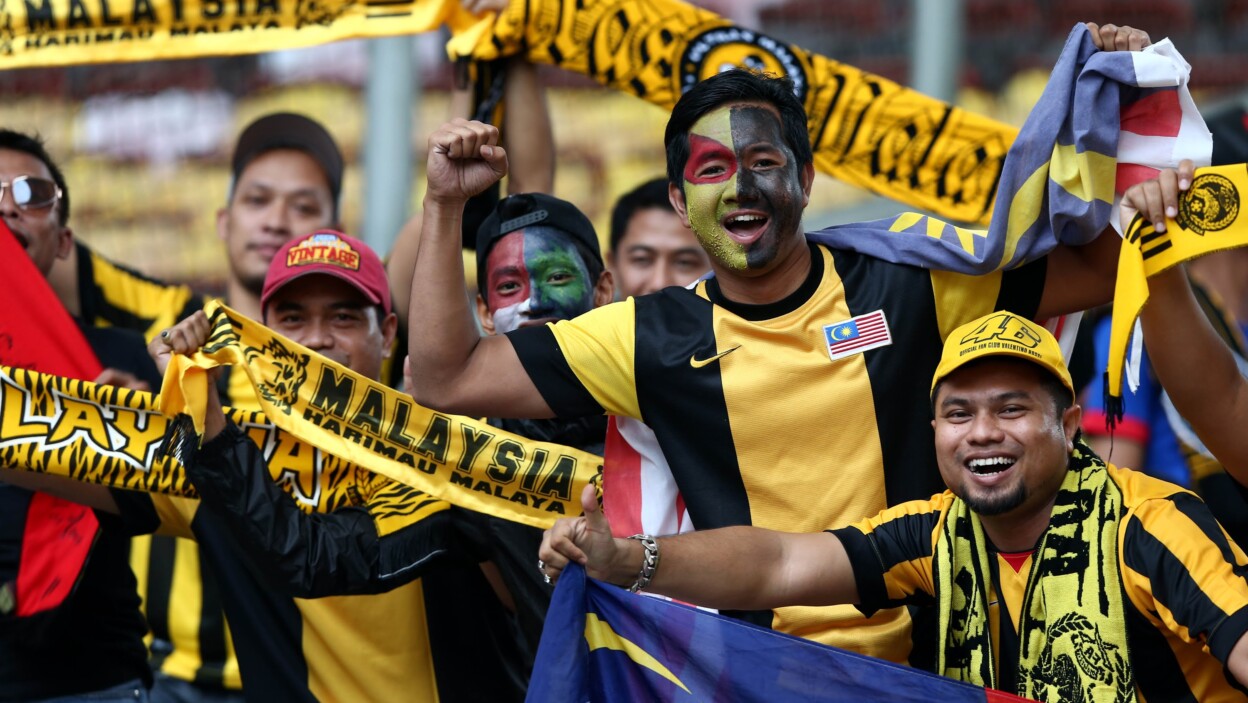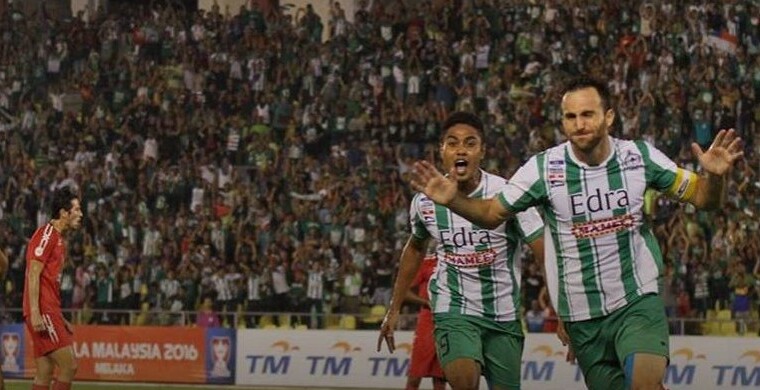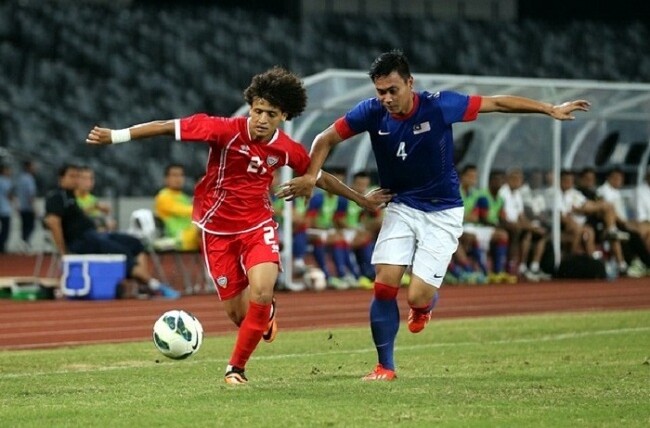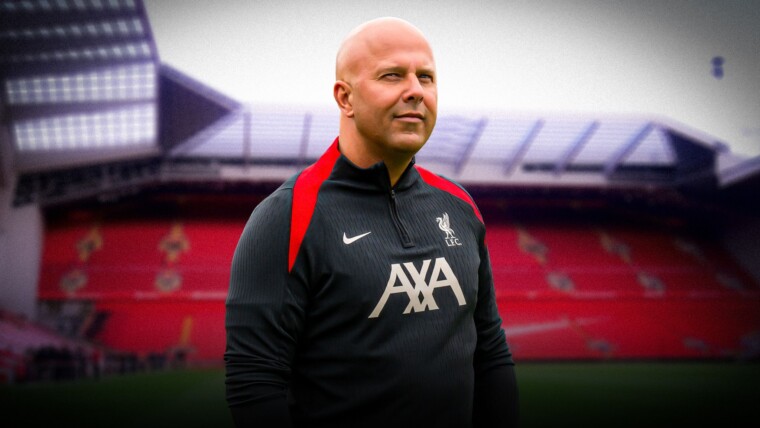The frustration of the National team’s performance in a goalless draw against Macau and Malaysia under 22’s 1-1 draw with Nepal prompted The Malay Mail columnist, Frankie d’Cruz, to write a vitriolic opinion piece that demanded the FAM “Return it (football) to the People.”
Two recent matches have shown that Malaysian fan culture – at the top-level – is thriving. The disappointing match against Macau was played against the backdrop of a healthy, mainly supportive, 15,000 crowd at the Stadium Hang Jebat in Melaka. And last Saturday, 22,680 packed the Larkin Stadium to see the home team dispose of PDRM 5-2 (6-2 on aggregate) in the FA Cup Quarter Final. Additionally there were 25,000 at Alor Setar for the Kedah vs. Sabah quarterfinal second leg the night before. Sell-outs are guaranteed when Johor meet Kedah at both of their two-legged semi final.
Those examples fuel the argument that Malaysia is “crazy” about its football. Viewing figures on TV for live league and National Team games are extremely high. As further anecdotal evidence, the fallout in the press and even on the political stage when the National team – in particular – fail to deliver “as they should do” is intense. From this point of view, there can be little argument. Malaysia is a football nation.
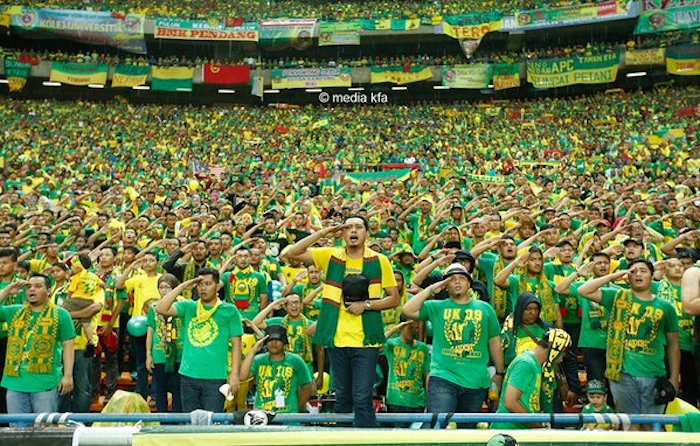
Or is it? On the same day as 25,000 watched Kedah take on Sabah, just 334 (three HUNDRED and thirty-four) paying customers watched one of the other FA Cup quarter finals between Premier League professional outfits PKNS and Sime Darby. This is Malaysia’s third biggest tournament, and less than 350 thought it worthwhile to watch a match that could see a team go into the last four.
The venue of the game in Melaka rather than in the home team’s own State of Selangor provides a partial excuse for the poor attendance. But truly, if Malaysia had a deep football fan culture, surely there would be more than just 334 people interested in watching a match between two of the top 24 teams in the country.
The juxtaposition of the Malay Mail opinion piece, and the (not unexpected) dreadful attendance at the FA Cup Quarter Final match, prompted a question on the ethos that football is – truly – the people’s game in Malaysia. It prompted me to take a look at how much support there is for teams other than the state teams, and to look at how many semi or non-professional leagues and clubs are in existence? The answer was pretty disappointing for those arguing that Malaysia is a “football nation”.
Atmosphere – Magical & Non-Existent
It has been a pleasure in the last decade to be at spine-tingling, passionately supported, matches involving the National team, Johor, Selangor, Pahang, Kelantan, Perak, Terengganu, Sarawak and Negeri Sembilan over the last six years. The 2010 AFF Final against Indonesia, and the Malaysia and FA Cup Finals featuring Johor and Kelantan, and Johor and Pahang rate as three of the most exhilarating atmospheres I have ever experienced. Anywhere.
But there have also been top-level matches involving PKNS, Felda United, PDRM, ATM and Kuala Lumpur where there have been crowds in the low hundreds. And go down into the FAM League and attendances are measured in the tens, rather than thousands. The “People’s Game” mantra seems to be very selective.
Take the extraordinary “Ultras” away from most National team matches, and attendance figures are low. Except, of course, for the “important games” when everyone wants to come out to watch and suddenly, the national team are the big news again and are expected to be competitive. Is that what Malaysia’s “People’s Game” means? Turning up for the big games only?
The attitude to domestic Football in Malaysia is confusing to one who wasn’t here in the dark days of the 80’s and 90’s. For a Nation of 30,000,000, the sport is remarkably invisible. Written Media outlets generally devote more space to International sport than domestic (though The Star Newspaper – to its credit – devotes some time to the State Leagues); a look around football fields on a weekend sees precious few organised matches being played; online activity about domestic football (below the top two leagues) is hard to dig out; and broadcast coverage of the domestic football scene is sparse.

On the field, there seems to be little depth in the game in terms of clubs and / or support. Such shallow depth of competition must have a fundamental and direct result on the results of the National team. If there are few leagues to play properly competitive football in, then there can be no emergence of players to put pressure on – and subsequently improve – those at the top of the tree.
If the FAM and State were more pro-active at this level, then perhaps more definitively self-reliant and locally based clubs like Penang’s Sungai Ara would exist. I’m sure there are more geographically relevant clubs, like Sungai Ara, with similarly motivated personnel behind the scenes, but it has been difficult to find out information about them.
Structural Comparisons
The Malaysia People’s League – started this year – is a start in the right direction, and will add some depth to a shallow State League structure (just two divisions in KL and Melaka, and three in Selangor). And it is gratifying to hear that Datuk Vida’s sponsorship of football in Kelantan goes down to grass-roots level and includes the District People’s League Division.

The information I can glean suggests that there is a structure in Malaysia with the top two divisions fully professional; 18 largely semi-professional clubs in the FAM League, and some 150 clubs playing in the State leagues at level “4” in Malaysia. Below that there are maybe several hundred clubs nationwide playing in various amateur regional Leagues.
I offer the following comparison as to the required “depth” for a system to provide competition to big name player. In the UK there is a system managed by the much-derided officers, or “Blazers”, of the Football Association that is responsible for organizing and administering a structure that provides great depth to English football.
England’s Pyramid
Consider this. Below the FA English Premier League, there are three fully professional leagues (Championship, League One and League Two). Leading to the top four leagues is a National League (level 5), regional feeder leagues (level 6) into the National League which are themselves fed by three other feeder leagues. Right down to this level, most clubs (150 in total) are fully professional and independent, and own – or are responsible for – their own stadium.
Level seven sees a further 60 near-professional outfits like the Southern League side Farnborough – with whom Malaysia International, Junior Eldstal, spent his formative late teenage years – plus Northern Premier & Isthmian League teams trying to get promotion to the next level. With some exceptions, if you took the vast majority of players out of Malaysia’s level 1 and level 2 and moved them to the UK, this is the level that most would be expected to operate.
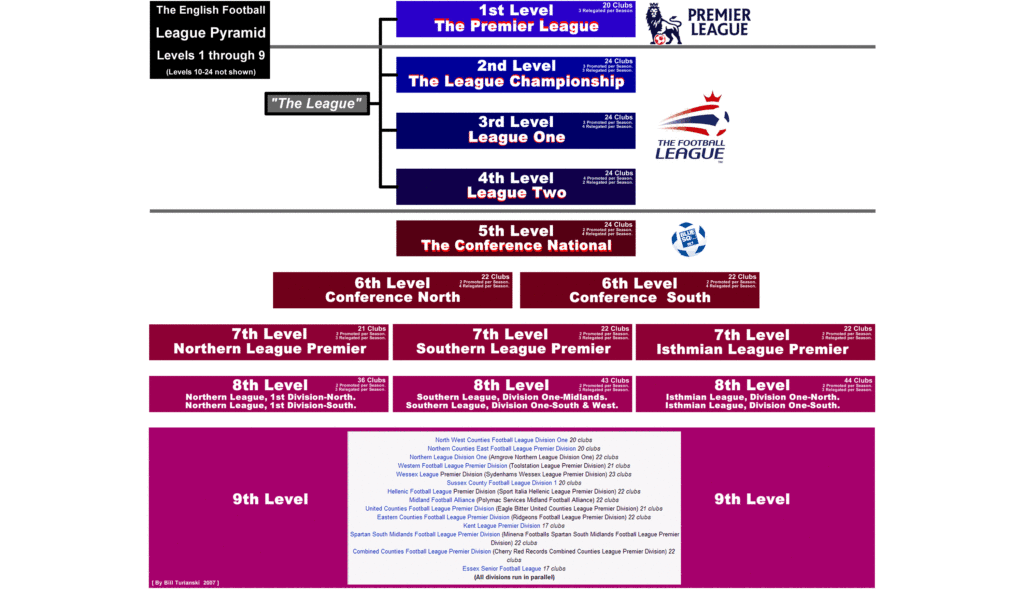
Below levels seven and eight, you split into even more closely geographically defined feeder leagues that form what the FA call their pyramid. Each of these leagues has 16 or more clubs, and some of the leagues have several divisions. Once you reach level eleven, that is when County Football Associations kick in.
Bear with me.
There are Fifty One county Football Associations (FA’s) – including one FA responsible for running English Schools. Let’s look at ONE of those county Associations. Liverpool FA. They manage and run – in Liverpool alone – nine men’s Saturday Leagues, eleven open age men’s Sunday leagues – twenty seven youth leagues – three women’s leagues – ten futsal or small sided leagues. And Liverpool FA is by no means the largest FA of the 51.
Taking an example of ONE club under the auspices of ONE of fifty-one FA’s – a club Old Xavarians, based in Liverpool. The “Old Xavs” are a Club formed mainly from ex-students of the school upon whose grounds the club plays its home games. The Xavs run five men’s senior teams, four veteran teams, and eleven youth or junior teams from under-7 to under-14. The teams are run and managed on a purely voluntary basis, and operate out of a clubhouse built on the school grounds of which most players are Old Boys.
The school also has teams who play in the County FA School competitions, where the likes of future players Sammy Lee, David Warner and Mike Newell learned to play competitive football. The purpose of these last few paragraphs is to show the depth of the football experience in the UK. It is far more than just the elite Premier League, and is an experience far-removed from the typical situation in Malaysia.
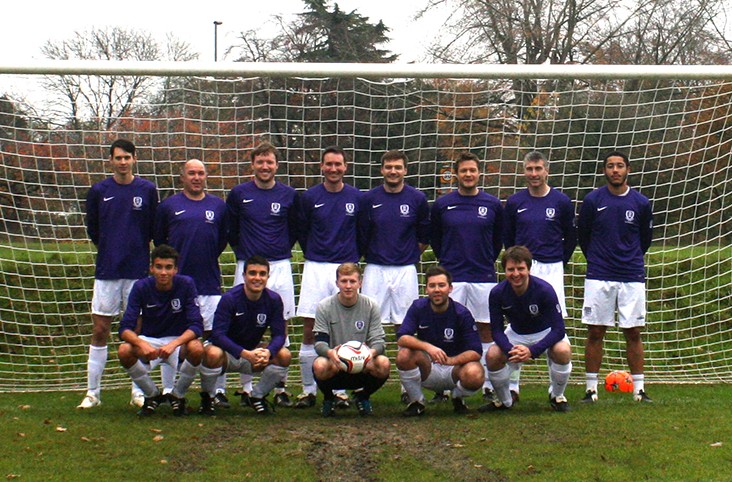
The added value of such a depth of leagues is that if players are not good enough, then they get replaced by others who are. There is a competitive environment in which, truly, only the best survive. And those who aren’t good enough can still find a level at which they can comfortably and enjoyably play serious, organised football.
Comparison: Germany vs Malaysia
And the situation is similar in Germany where there are 14 organised levels of football played at National, Federal, Regional and State levels. There are some 336 fully professional clubs playing levels 1-5; 369 decent semi-professional teams playing levels 6 and 7; and a further 30,000 – Thirty THOUSAND – registered teams playing in fully organised amateur Leagues in Germany.
If you are looking for clues as to why Germany do so well in football, there’s a pretty big clue right here. Germany is a football Nation. Undoubtedly.
And it’s not just Germany and the UK. Closer to home, In Japan the system is one where J1, J2 and J3 League are fully professional. Japan Football league below that is fed by 9 Regional Leagues, which are fed by 47 Prefectural leagues. Approved Licensing is required to move up a Division.
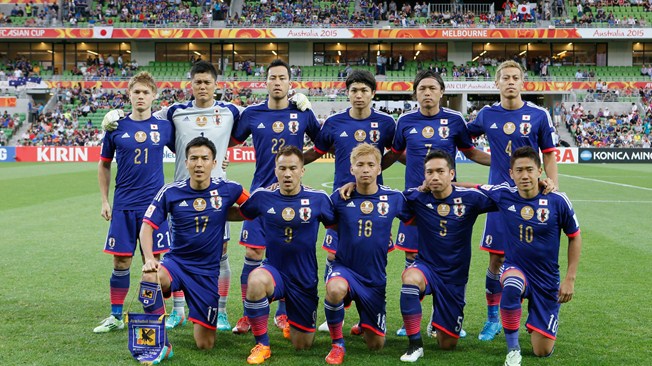
It is not by accident that Japan has regularly made the World Cup Finals. They have a structure designed for Competitiveness.
Where Are They Now?
As an example of how uncompetitive the scene is in the Malaysian National squad, let us re-live the 2009 SEA Games triumph in Laos. Of that 18-man squad, all bar Zaquan Adha and Sabre Mat Abu are signed with a Super league club in 2016. Seven of the squad are still National regulars, and none of the 18 has dipped below Premier League level. That suggests either that the 2009 SEA Games winning squad was a particularly strong one – or that there have been few alternatives to those who made the 2009 SEA Games selection.
When Datuk Ong Kim Swee bemoaned after the Macau draw that “these are the best forwards in Malaysia … who are playing regularly (in the M-League)” he wasn’t joking.
For comparison: England made the final of the UEFA under 21 Championships in that same year of 2009. Of the 22-man squad who lost in the Final to Germany, only Joe Hart is a likely England starter at Euro 2016. Three others – James Milner, Theo Walcott and Danny Rose – have good prospects of being in the squad, with Kieran Gibbs an outside chance.
Of others, the likes of James Tomkins, Mark Noble, Lee Cattermole, Craig Gardner, Gabby Agbonlahor and Micah Richards are current Premier League players – as was Adam Johnson until his recent imprisonment. Frazier Campbell is a fringe player at Crystal Palace, whilst Michael Mancienne and Nedum Onuoha are regulars in the top leagues in Germany and Scotland.

But Ian Crainie (Huddersfield), Scott Loach (Lincoln), Richard Stearman and Joe Lewis (Fulham), Andrew Taylor (Wigan) and Andrew Driver (Graafschap) fell away from the top levels, and – whilst enjoying respectable careers – were overtaken by the likes of Jamie Vardy (ex Level 5 at Fleetwood) and Tom Heaton (a youth at level 5 Wrexham); Chris Smalling (formerly of Level 6 Maidstone Utd) and Charlie Austin (ex level 7 at Hungerford); John Stones and Delli Ali (found in League One, level 3).
The depth of competition in England means that there is constant pressure on players to improve. If they don’t, they will not stay at the top. When Ong Kim Swee says that the players at his disposal are the best in the country, he is right. But when rankings slip to 170+ and there are no players better than those who have been in situ since 2009, then surely there is a problem with the player production line.
To try to solve the conundrum of Malaysian football, perhaps the problems exist because there is so little competition. And there is so little competition because there is so little depth. And there is so little depth because there are few Leagues organized to play in. And as there are no leagues to play or watch, then people see football as something to WATCH, not do.
So, is Malaysia a true footballing nation?
Investors
There are a few characters – like the Tunku Makhota of Johor – taking a hold of football and pro-actively trying to re-shape it. New FMLLP Head Kevin Ramalingam is another trying to force through infrastructural changes. But such re-shaping cannot just be at the elite level.
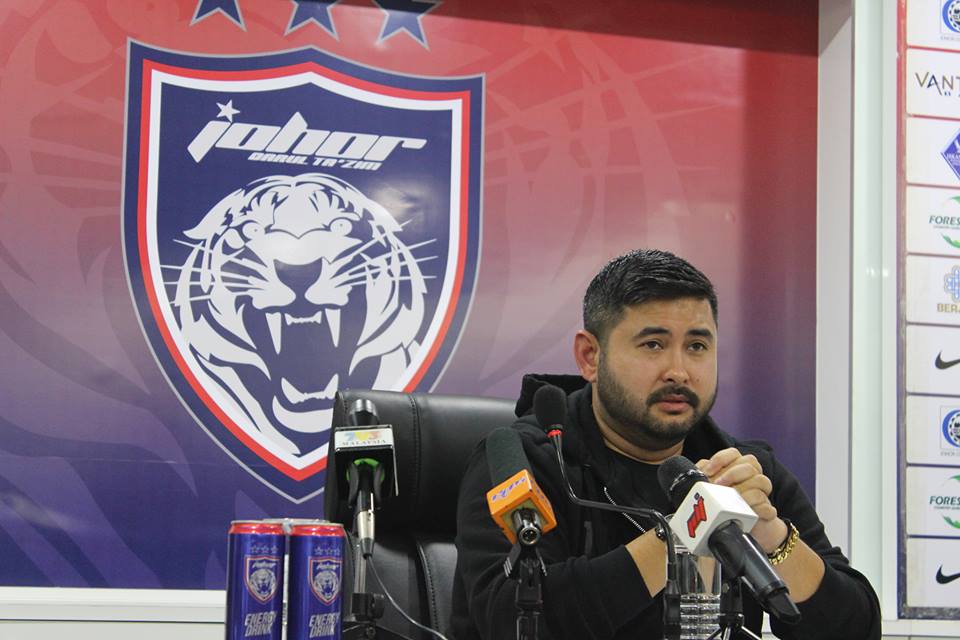
Best practice from elsewhere says that there need to be numerous organised amateur leagues that lead to some form of National competition. There need to be town and city based teams well run as feeder for better State league teams. (how can a city the size of Petaling Jaya not have a team representing it?). Where Kuala Lumpur has two divisions of teams, Liverpool County FA has seven at the amateur level. That is the comparison.
The development of the People’s League is certainly welcome, but – if Malaysia truly is a football Nation – it is surely only a start.
And investment doesn’t need to just be in dollars. In the established “football countries” investment is made in people’s time and effort. Each of those 30,000 German amateur clubs is run by a group of enthusiasts, and there are thousands of community minded volunteers.
Demand
Astro Arena’s “Kembola” initiative has shown us that there are thousands and thousands of kids around the country who WANT to play football on an organised basis. But they have precious few opportunities. Junior Leagues such as the 1MCC league or the Junior Football league in Subang Jaya are rare examples of organised Leagues. I am sure there are many others (and please write to tell us), but they get little profile and don’t seem to be part of a coordinated pattern of leagues. Certainly information about them is required.

Frenz United’s investors have spent many millions of dollars in creating an academy, and also creating an International quality fixture list for their students, because they didn’t see that there was a good enough structure in place for them to get good age-level competition.
But now the Frenz United Graduates face another problem. When they are over 18, there are few places for them to graduate to. Not all will be good enough to become professional, and yet most – if not all – could surely be an asset to a decent semi-professional club. And yet there are few semi professional clubs for them to move to.
Blame Game
If – as Frankie d’Cruz wrote – football really does belong to the People, then whilst the “blame” for the limited structure probably falls at the feet of the FAM, surely the “blame” belongs at more than one door.
If football is the people’s game, then isn’t it reasonable to expect the best practices of Japan, Germany and the UK to be implemented. For more grass-roots volunteers to kick-start initiatives; and more fans to watch games other than the top-level matches; and more media organisations to report regularly on the lower leagues.
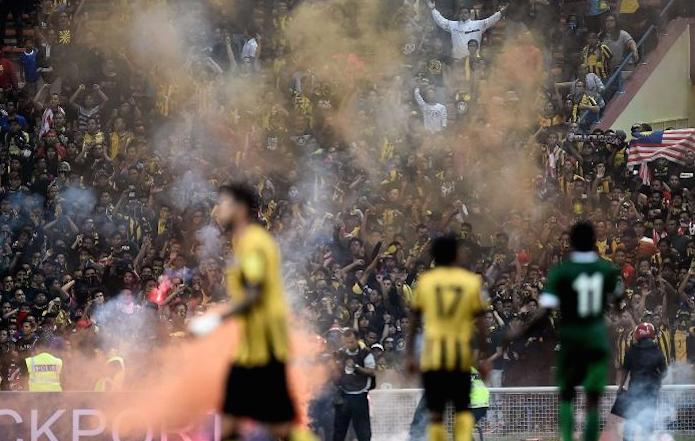
The FAM and State FA’s have much work to do to support and create structures. But – best practice shows – it is not all one way. There is a reason Germany, England and Japan feature prominently on the world football stages. And it’s not just about the big clubs.
So – Is football in Malaysia truly the people’s game?
Other posts by Dez Corkhill

